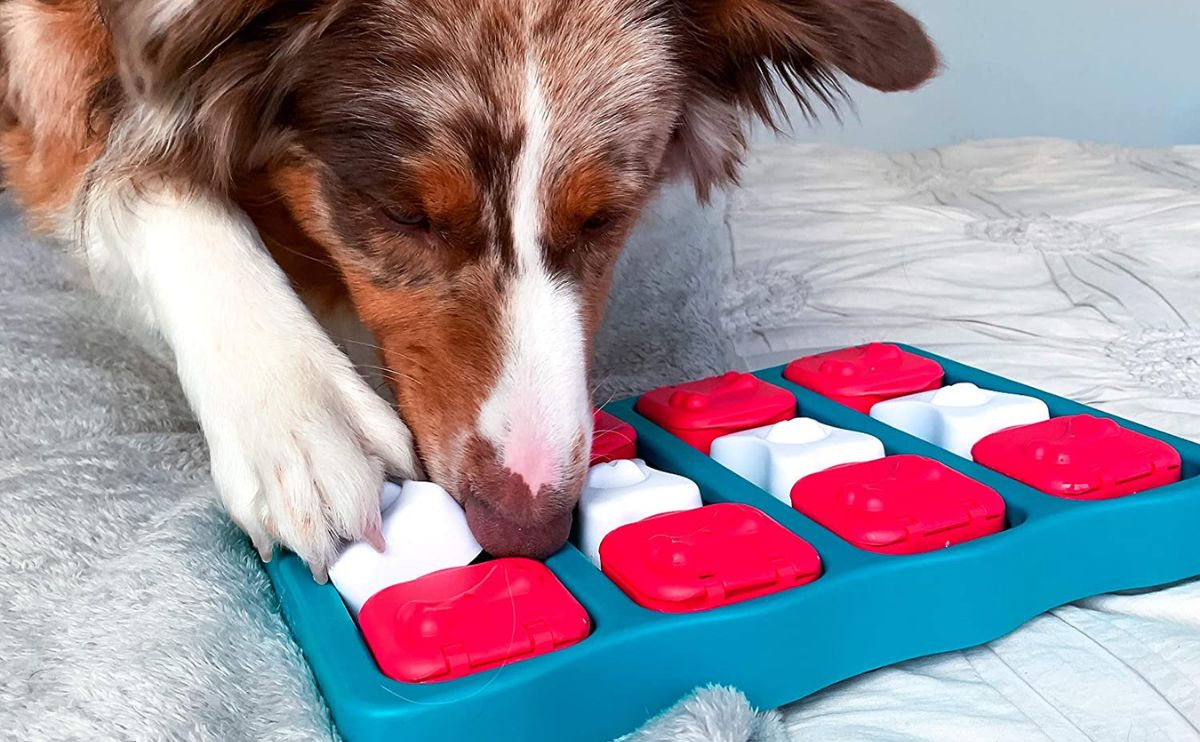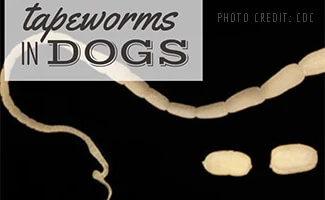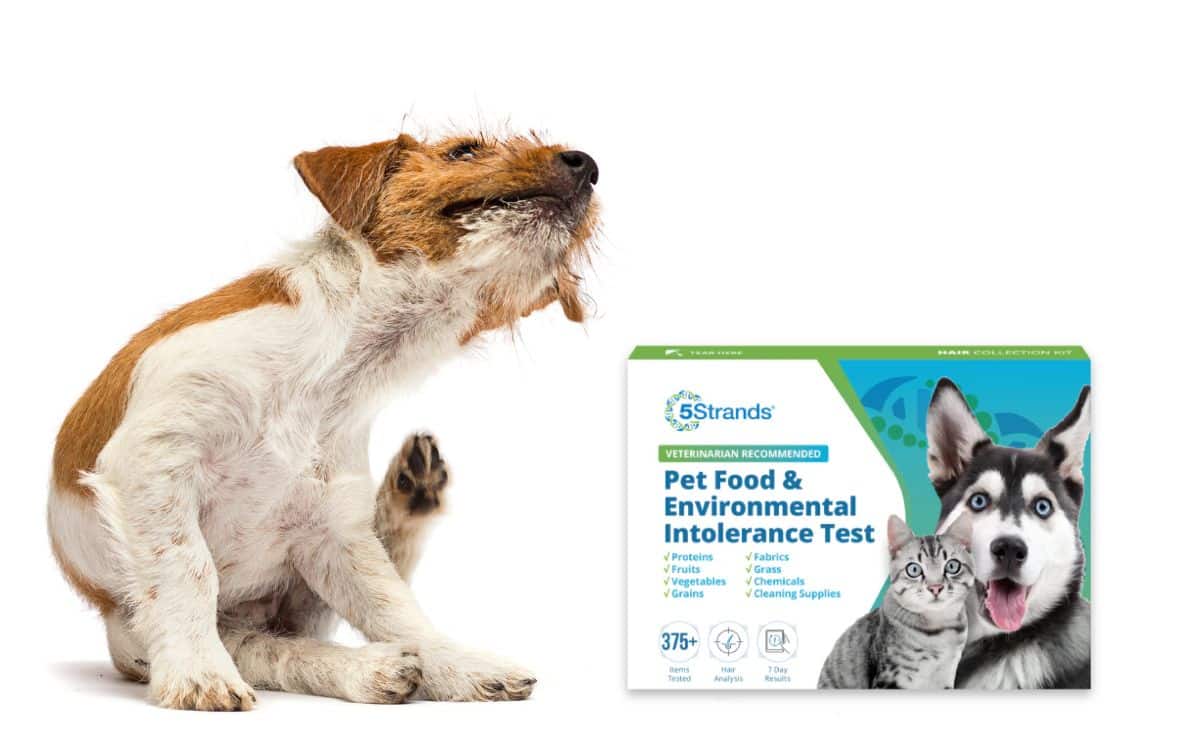How To Express Your Dog’s Anal Glands Like A Pro And End The Scooting Nightmare
When you purchase through links on our site, we may earn a commission. Here’s how it works.
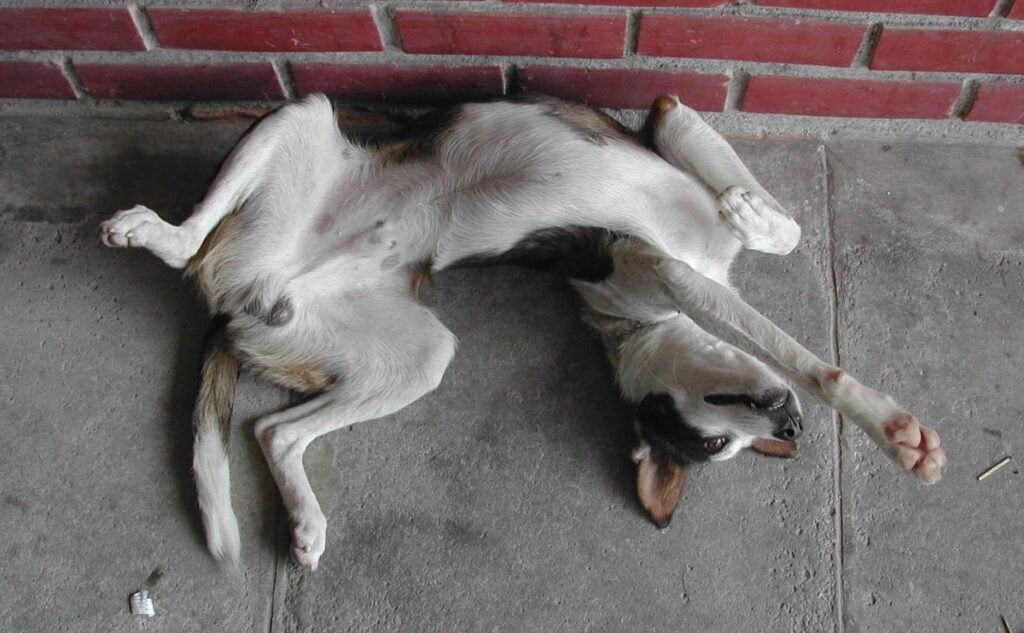
It’s not the most pleasant subject to discuss. But hey, you’ve dealt with your dog’s puke and potty accidents before, right? This is just one more delightful duty that comes with being a devoted dog parent. And let’s be real—your dog isn’t going to YouTube it and do it themselves.
Table of Contents
If your pup suffers from the occasional mystery butt scoot, I’m here to help. Learn how to spot the signs of impacted anal glands, how to express them (without emotionally scarring yourself), and what you can do to help prevent frequent blockages.
What Are Impacted Anal Glands In Dogs?
Ah, the glamorous world of dog ownership—where one day you’re tossing a frisbee in the park, and the next you’re watching your dog drag their butt across the floor like they’re trying to put out an invisible fire. Welcome to the wild and repulsive world of impacted anal glands in dogs.
So what’s happening back there? Your dog has two tiny sacs near their anus that are supposed to release a bit of foul-smelling fluid every time they poop. It’s nature’s way of saying, “I was here,” because evolution decided they needed a built-in stink bomb for personal identification. But sometimes, these glands don’t empty properly. Instead of fluid coming out when your dog poops, it gets stuck inside, thickens, and turns into a big problem.
Your dog, being blissfully unaware of veterinary science, will attempt to fix this in the only ways they know how—scooting their rear across your carpet and licking their behind— all the while unleashing an eye-watering stench that makes you question every decision that led you to pet ownership. If ignored, this fluid backup can become an infection, abscess, or, worst case, ruptured glands requiring surgery. Yes, that’s as horrifying as it sounds.
So if your pup starts performing their signature butt drag across your floor, take the hint. Something’s brewing back there, and it’s not going to fix itself.
Anal Glands vs Anal Sacs
You might hear the terms “anal glands” and “anal sacs” used interchangeably, but they’re slightly different. The anal sacs are the small pouches located on either side of your dog’s anus, and the anal glands are the tiny glands within them that produce the infamous, smelly secretion. These glands serve an ancient evolutionary purpose of marking territory, but in modern times, they primarily serve as a disgusting problem you’ll need to deal with if things go wrong.
What Causes Impacted Anal Glands?
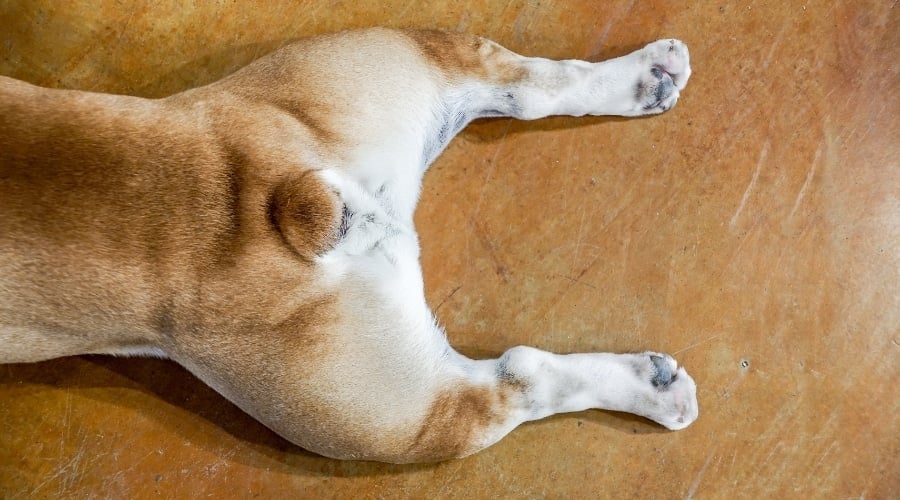
The main culprit? Inflammation that narrows the ducts and stops fluid from escaping correctly. Some factors make certain dogs more likely to suffer from this issue:
- Breed predisposition: Some dogs are more prone to anal gland issues.
- Food allergies: Allergic reactions can lead to inflammation and irritation in—you guessed it—the butt region. A diet that doesn’t agree with your dog’s system can cause loose stool, which is about as helpful to anal gland health as an empty toothpaste tube is to brushing your teeth.
- Hypothyroidism: If your dog’s thyroid is sluggish, their metabolism slows down, affecting digestion and gland function.
- Low-fiber diets: Fiber bulks up stool, making it firm enough to express the glands during defecation naturally. Without fiber, your dog’s poop is like a wet noodle—useless.
- Obesity: Too much junk in the trunk can physically block the glands from draining. If your dog is built like a furry potato, their glands may struggle to empty correctly.
Many cheap commercial dog foods don’t contain enough fiber to harden a pup’s stools. And it’s these solid stools that help your dog’s body naturally express the anal gland fluids. So, if you’re looking for an easy solution to reduce the chances of impacted glands, we recommend transitioning your dog to a higher quality, fiber-rich food. Of course, talk with your veterinarian first before changing your dog’s diet.
Some medical issues can also cause loose stool or diarrhea, including allergies and anal gland cancer in dogs.
How Do I Know If My Dog Needs Their Glands Expressed?
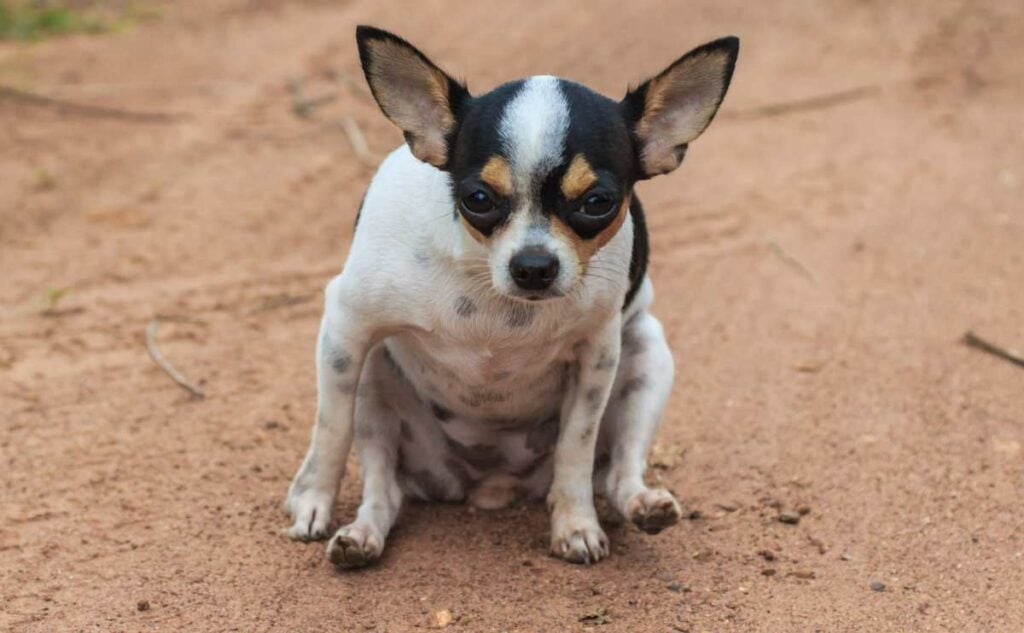
Not sure if it’s time to intervene? Here are some signs that your dog’s anal glands need help:
- A foul fishy smell following your dog around like an unwanted ghost
- Bleeding or pus (which means it’s time to get to the vet ASAP)
- Excessive butt licking or biting (not their proudest moment)
- Leaking anal gland fluid indoors (you’ll know when it happens—it’s unforgettable)
- Redness, swelling, or visible discomfort around the rear end
- Scooting (aka dragging their butt across the floor)
If you notice any of these symptoms, it may be time for a gland expression—either by you (if you’re brave enough) or a professional.
Are Some Dogs More Prone To Anal Gland Issues?
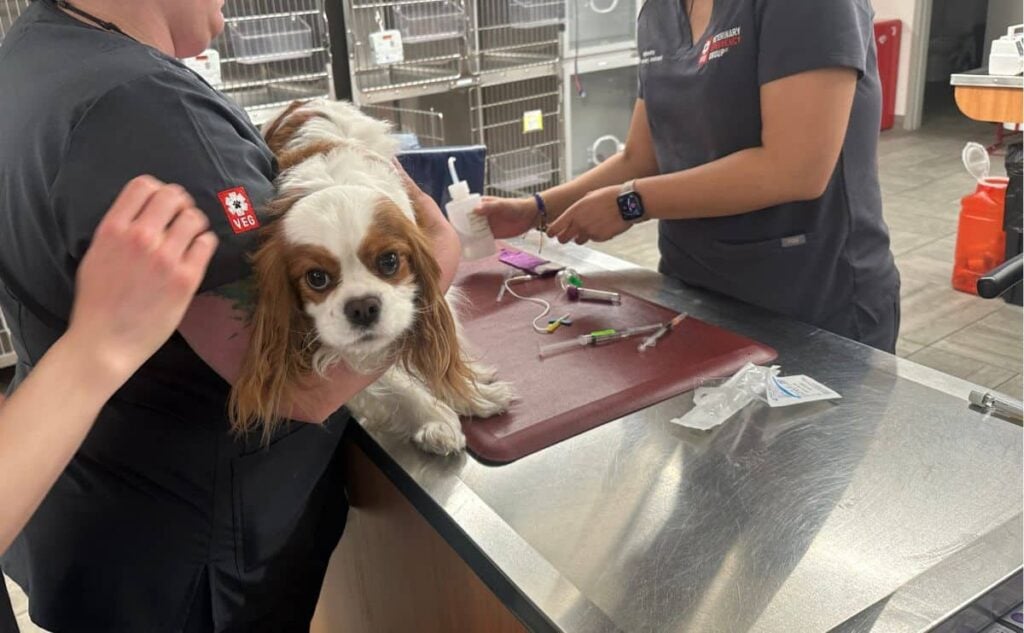
Impactions and infections are more common in small to medium-sized breeds, including:
- Beagles
- Basset Hounds
- Chihuahuas
- Cocker Spaniels
- Dachshunds
- Lhasa Apsos
- Miniature and Toy Poodles
Large-breed dogs seldom suffer from anal gland problems, as their anatomy and natural movement help facilitate gland expression. Smaller breeds tend to have narrower gland ducts, making them more prone to blockages. If you own one of these dogs, consider regular gland checks as part of your pet care routine to avoid unpleasant surprises.
How To Express A Dog’s Anal Glands Externally
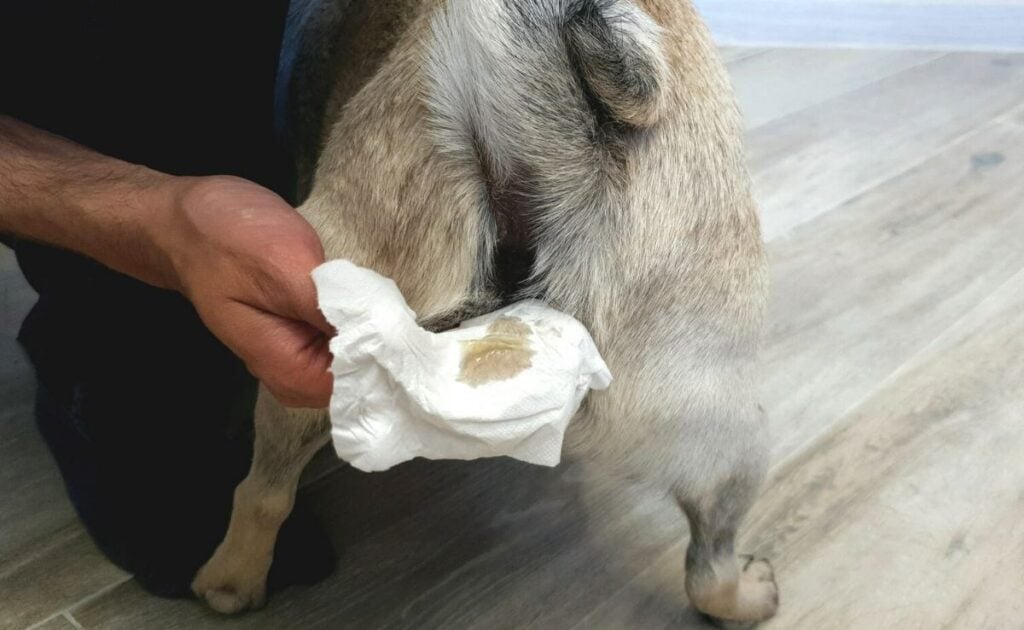
You can express their glands at home if your dog isn’t showing signs of an infection or serious irritation. But fair warning—it’s an intimate experience that will test the limits of your love. Here’s how to do it:
What You’ll Need
- A pair of disposable gloves
- Vaseline or a similar lubricant (for reasons you’ll soon understand)
- Paper towels (many, many paper towels)
- A warm, soapy washcloth
- A helper (preferably someone who still be your friend after this)
7 Steps To Expressing Your Dog’s Anal Glands
- Position your dog. Place a small dog on a table or kneel behind a large dog. Your dog should be standing on all fours.
- Have your helper gently restrain your dog. We recommend having them place one arm underneath and around your dog’s neck like a cradle and the other arm hugging the rest of their body closely.
- Put on gloves and lubricate your index finger. (Take a moment to reflect on how you got here.)
- Lift their tail and insert your index finger into your dog’s rectum (about one inch).
- Locate the anal glands. Place your thumb on the outside of your dog’s anus and bring your thumb and index finger together, running them around their anus. One anal gland is located at the 4 or 5 o’clock position, and the other around the 7 or 8 o’clock position. They feel like two small, firm peas (or swollen grapes, if they’re impacted).
- Gently squeeze (milk) the glands. Place a paper towel in front because fluid squirts outward. Apply light pressure until fluid is released. When you can barely feel the gland, it’s fully expressed.
- Wipe and clean up. Use a warm, soapy washcloth to clean the area and remove any lingering odor.
Note: Normal anal gland fluid is brown with a thin consistency. If the expressed fluid is thick, chunky, or colored green, yellow or gray, this is abnormal and could indicate an infection or other problem. You should contact your vet in the case of abnormal fluid.
Video Tutorial
The video below does a great job of helping you visualize the process.
How Often Should I Express My Dog’s Anal Sacs?
You should only empty them when you spot the typical symptoms described above. To be on the safe side, call your veterinarian when you notice the symptoms and ask if it’s okay to express the anal sacs yourself.
Be aware that expressing a dog’s anal sacs too frequently can actually increase the risk of impaction. Overexpression can cause irritation and swelling, leading to even more discomfort for your dog. If you feel uncomfortable doing this unpleasant task yourself, take your dog to your veterinarian or a professional groomer with experience in safely performing gland expressions.
Some dogs may require more frequent expression due to chronic issues, but this should always be determined with the guidance of a vet. When in doubt, let a professional handle it.
Soothing & Treating Anal Gland Problems At Home

For mild irritation and post-expression care, you can use specialized sprays and wipes designed to soothe the area and reduce inflammation.
A highly rated option is the HICC PET Anal Gland Spray, which provides gentle relief and antibacterial protection to help keep your dog comfortable. This spray contains hypochlorous acid (HOCl), a powerful yet safe antimicrobial agent known for its natural healing properties. Hypochlorous acid is:
- Anti-inflammatory: Helps reduce swelling, irritation, and redness
- Antimicrobial: Kills bacteria and prevents infections in sensitive areas
- Non-toxic & pet-safe: Naturally found in mammals’ white blood cells, making it safe for frequent use
Simply spray the affected area after gland expression or when irritation occurs to relieve discomfort and prevent bacterial buildup. This is especially useful for dogs prone to frequent anal gland issues or those recovering from a recent vet visit.
If your dog is licking or biting excessively, you may also consider using a soft cone collar to prevent further irritation while the area heals.
When To Seek Veterinary Treatment
If your dog has bleeding, pus, extreme swelling, or persistent discomfort even after a gland expression, it’s time for a vet visit. Severe cases may require antibiotics, anti-inflammatory medication, or even surgical removal of the anal sacs if infections become chronic.
Our Personal Experience With Dog Anal Gland Issues
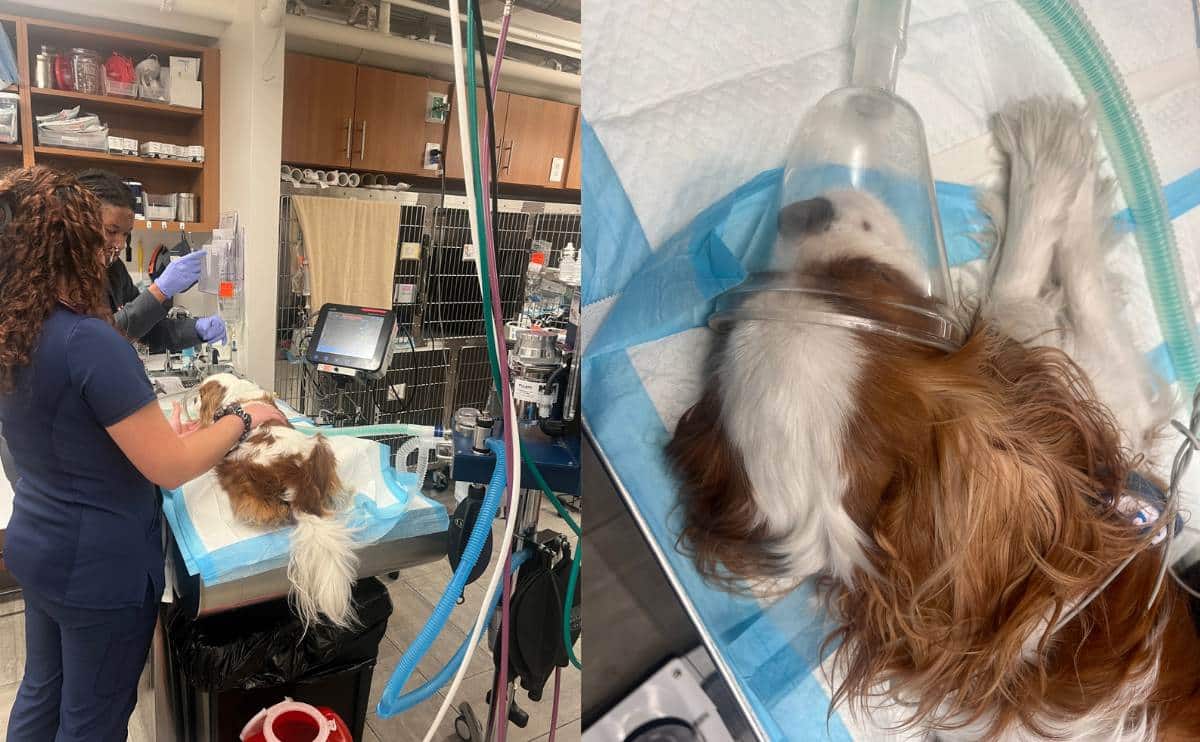
Both our Cavalier King Charles Spaniel dogs had ongoing anal gland issues. Lexie our rescue girl, would scootch across the floor when her anal glands were full and needed to be emptied, which required visits to the vet every 6-8 weeks or so. Sometimes groomers would be able to externally empty them, but only a vet could internally empty them, which is more effective.
Georgie, our male puppy, had ruptured anal glands twice, and he didn’t show any symptoms of scootching or licking until it was too late. The first time he wouldn’t stop biting his leg and butt area, and upon further inspection, we noticed a large, hard lump near his anus. We took him to the emergency vet, where they performed minor surgery to cut open the anal gland to remove the excess fluid and relieve the swollen area.
The second time, the glands ruptured on their own, and there was a lot of bleeding around his bum and tail. We took him to the vet immediately, and they shaved the hair around the groins and cleaned out the infected gland with an alcohol-based cleaning solution. The vet also removed any excess fluid that was inside his glands. In each case, he was put on pain medication and antibiotics to prevent any further infection. They also recommend using a wet, warm compress to help with swelling and a follow-up visit with his regular vet within a week to make sure the area is healing properly.
– Sadie Cornelius, Cavalier King Charles Spaniel Dog Mom & Creative For Canine Journal
Prevention: Maintain A Fiber-Rich Diet

Now that you know how to identify and manage anal gland issues, let’s talk about prevention—because, let’s be honest, nobody wants to deal with impacted glands if they don’t have to. A fiber-rich diet is one of the most effective ways to keep your dog’s digestive system functioning correctly and ensure their anal glands empty naturally during bowel movements.
How Does Fiber Help?
Fiber plays a crucial role in regulating digestion, firming up stools, and naturally expressing the anal glands. When a dog’s stool is firm, it applies pressure to the anal sacs as they defecate, helping to empty them regularly. This means fewer gland impactions, less scooting, and a significantly lower chance of that dreaded fishy odor lingering around your home.
How Can I Alter My Dog’s Diet?
If your dog’s diet is lacking fiber, making small, gradual changes can improve stool consistency and prevent gland issues. Some excellent high-fiber foods to consider adding to your dog’s meals include:
- Apples and carrots: Crunchy, fiber-rich snacks that support gut health
- Bran or oat fiber: Helps bulk up stools naturally
- Brown rice: A healthy complex carbohydrate that aids digestion
- Canned pumpkin: Not only packed with fiber but also great for digestion
- Leafy greens (like spinach and kale): Provide additional fiber and antioxidants
Introduce new foods slowly to avoid stomach upset, and always consult your vet before making significant dietary changes.
What’s The Best High-Fiber Dog Food For Anal Gland Problems?
Sometimes, simply switching to a higher-quality dog food with more fiber and natural ingredients can make a world of difference for anal gland health. Look for high-fiber formulas with real protein sources and no artificial additives.
Two excellent recipes are:
- Wellness Core Natural Reduced Fat Grain Free Dry Dog Food: High in fiber and protein while helping maintain a healthy weight
- Rachael Ray Nutrish Natural Dry Dog Food: Affordable, natural, and packed with wholesome ingredients
If your dog is prone to anal gland issues, switching to fiber-focused food could help reduce impactions and support healthy bowel movements.
Are Supplements Effective For Anal Gland Problems?

In many cases, fiber and probiotic supplements can be a game-changer for dogs that struggle with anal gland issues. If you’re not keen on completely changing your dog’s food, adding a high-fiber supplement and probiotics can help firm up stools, improve digestion, and support natural anal gland expression.
Some highly recommended supplements include:
- Diggin’ Your Dog Firm Up Pumpkin Digestive Aid: A simple, natural fiber boost that aids digestion and promotes healthy stools
- Vetnique Glandex Anal Gnad Soft Chews: Explicitly formulated for anal gland support, these chews contain fiber, probiotics, and anti-inflammatory ingredients to help prevent gland impactions
- NaturVet No Scoot Anal Gland Support: Helps firm up stools and reduce scooting with a blend of beet pulp, flaxseed, psyllium husk, pumpkin powder, and dandelion root
Probiotics play a critical role in maintaining a healthy gut microbiome, which directly affects digestion, stool consistency, and overall bowel health. When combined with fiber, probiotics can create the perfect digestive balance to keep anal glands functioning correctly and reduce the likelihood of future impactions.
If your dog has chronic anal gland problems, incorporating a daily fiber and probiotic supplement alongside a healthy, fiber-rich diet can provide long-term relief and prevent those dreaded trips to the vet for manual expressions.
Additional Tips for Keeping Anal Glands Healthy
A well-balanced diet is only part of the equation—here are a few extra steps to keep your dog’s anal glands in check:
- Encourage exercise: Regular physical activity keeps digestion moving and can help prevent constipation, contributing to gland impaction.
- Maintain a healthy weight: Overweight dogs have a more challenging time naturally expressing their glands, so keep an eye on portion control.
- Regular vet checkups: If your dog is prone to gland issues, routine checkups can catch problems before they escalate.
By feeding a fiber-rich diet, using supplements when needed, and ensuring your dog stays active, you can significantly reduce the chances of dealing with impacted anal glands—which means a happier dog and a less gross experience for you.
How To Safely Change Your Dog’s Diet
One last bit of advice we have for you is to be patient. It takes some practice to master the expression procedure, and if you ever have any questions, contact your veterinarian. Changing your dog’s diet can also take time; learn more about safely changing your dog’s food.
Changes won’t happen overnight or even in a week. Once you’ve stuck to their new diet, it typically takes a month to six weeks before you and your pup will see improvement.
Frequently Asked Questions
If you’ve made it this far, congratulations—you’re now an unofficial expert in the strange and smelly world of dog anal glands. But you might still have some lingering (hopefully not literal) questions. Below, we’ve answered some of the most common concerns dog owners have about gland expression, prevention, and overall butt health. Don’t see yours? Ask us in the comments.
Can I Take My Dog To The Groomer For This?
Yes! Many groomers offer anal gland expression as part of their services. However, some dogs may require a vet’s help if their glands are deeply impacted or an infection is present.
Does My Dog Feel Pain When Their Glands Are Expressed?
If done correctly, it shouldn’t be painful—just profoundly uncomfortable for you. Stop and consult your vet if your dog yelps, resists, or seems in pain.
Why Does My Dog’s Butt Still Smell After Expressing The Glands?
The fluid is aggressively odorous and can cling to fur. A thorough wash with a gentle pet-safe shampoo should help eliminate lingering smells.
How Often Should I Do This?
Only when necessary. Over-expressing can cause more problems, leading to irritation and swelling. If your dog has chronic issues, consult your vet for guidance.
Are There Natural Ways To Prevent Anal Gland Problems?
Yes! A high-fiber diet, regular exercise, and maintaining a healthy weight can help your dog’s body express their glands naturally during defecation.
Can Pet Insurance Help?

If you prefer to leave anal gland expression to the professionals, you’re not alone. While routine expressions can be a minor expense, ongoing anal gland issues, such as infections or impactions, can lead to costly vet visits.
However, pet insurance typically does not cover anal gland problems since they’re often considered preventable or a maintenance issue. That said, pet insurance can still be invaluable for unexpected accidents, illnesses, and emergencies. It ensures you’re financially prepared for major health concerns, allowing you to focus on your pet’s care rather than the cost.
To find the best coverage for your dog’s needs, check out our pet insurance provider reviews and see which options might be the right fit.
Why Trust Canine Journal?
Sally has over 20 years of experience in human health sciences communications, including more than 10 years as an expert on pet health conditions and treatment. She’s part of a team of dedicated canine professionals and long-time dog owners at Canine Journal. We test and research the best pet products, not only for our own pups but for all of our readers.
